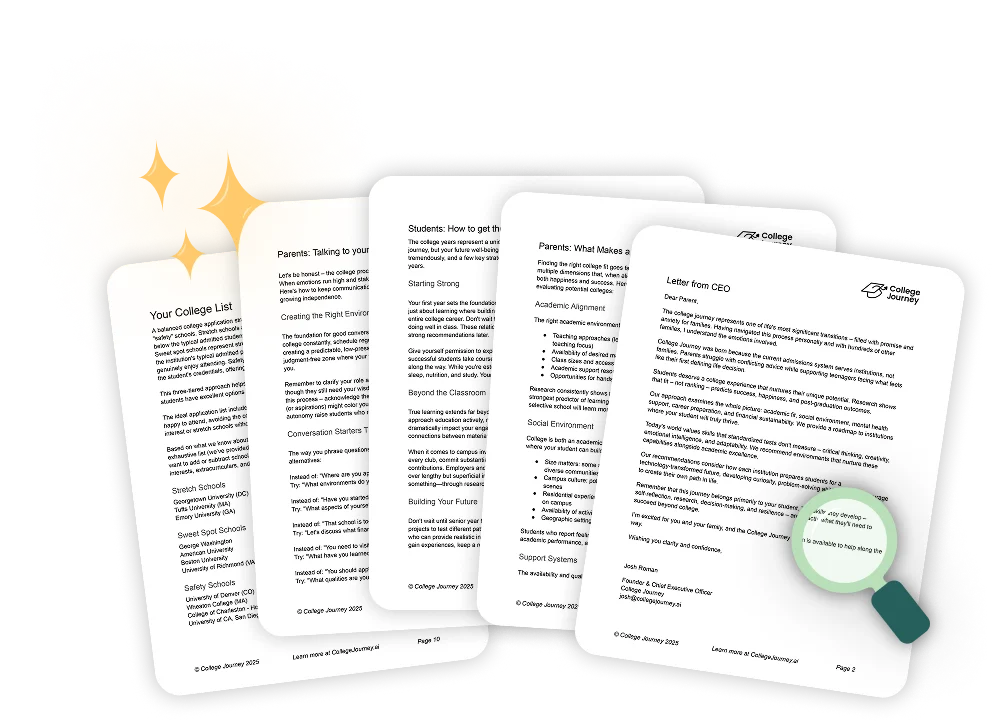Paying for college isn’t cheap, but financial aid can make it much more manageable. However, not all aid is the same. Some options, like grants and scholarships, offer free money that never needs to be repaid, while work-study programs help you earn as you learn. On the other hand, student loans can bridge the gap, but borrowing too much can lead to years of repayment.
So, what’s the best type of financial aid for college? The answer depends on your financial situation, academic achievements, and career goals. Understanding how each type works, where to find them, and how to apply them strategically can help you maximize free aid and minimize debt.
Key Takeaways
- Grants and scholarships are the best financial aid options since they do not require repayment.
- Need-based aid is awarded based on financial need, while merit-based aid is based on achievements.
- Filing the FAFSA early increases your chances of receiving more financial aid.
- Financial aid packages vary by school, so comparing them is important.
- Maintaining eligibility requires meeting academic progress standards.
- Scholarships are available year-round, and applying for multiple increases your chances.
The Best Types of Financial Aid Available
Financial aid makes higher education more accessible. Knowing the main types of financial aid helps you choose how to fund your education. The main types are:
- Federal grants are great for students who need financial help. They don’t need to be paid back, making them a good choice.
- Scholarships are also gift aid, given for academic achievement or special talents. Many organizations offer college scholarships, which can lower college costs.
- Work-study programs offer financial help by letting students earn money. Students can get part-time jobs related to their studies. This helps with costs and gives valuable work experience.
Need-Based vs. Merit-Based Financial Aid: Which One is Better to Pay for College?
There are two main types of financial aid: need-based and merit-based. Both can help you pay for college, but they work differently.
How Need-Based Financial Aid Works
Need-based aid is awarded based on your family’s financial situation. The less your family can contribute, the more aid you may receive. The Free Application for Federal Student Aid (FAFSA) is the key to unlocking this type of aid. Your Expected Family Contribution (EFC) (or Student Aid Index (SAI) under new FAFSA rules) determines how much need-based aid you’re eligible for.
Common need-based aid includes:
- Pell Grants: Awarded to students with significant financial need. The maximum award for the 2024-25 school year is $7,395.
- Federal Supplemental Educational Opportunity Grant (FSEOG): Provides extra aid (up to $4,000 per year) for students with the greatest need to help pay for college.
- Work-Study Programs: Students can earn money through part-time jobs on or off campus.
- Subsidized Federal Loans: These loans do not accrue interest while you are in school, making them a better option than private loans.
Need-based aid should be your top priority if you come from a low-income household. Since it’s based on financial need, you don’t have to compete academically for these funds.
How Merit-Based Financial Aid Works
Merit-based aid is awarded for academic achievements, talents, leadership, or special skills. Unlike need-based aid, your family’s income does not affect eligibility. You may qualify for this type of financial aid if you have strong grades, athletic abilities, or unique talents.
Common sources of merit-based aid include:
- College Scholarships: Many schools offer merit scholarships based on GPA, test scores, or leadership roles. Some even provide full-ride scholarships for top students.
- Private Scholarships: Organizations, companies, and nonprofits award scholarships for academics, sports, arts, and even hobbies. Some examples include the Coca-Cola Scholars Program ($20,000) and the Gates Scholarship (full tuition for low-income, high-achieving students).
- State Scholarships: Some states offer merit-based awards for in-state students who meet academic requirements.
Merit-based aid is competitive, but it can significantly reduce your college costs. If you have a strong academic or extracurricular record, applying for merit scholarships is a great way to earn free money.
So, which type of aid is better? Well, that depends on your situation. Need-based aid is your best bet if your family has limited financial resources. If you have strong academics or special talents, merit-based aid can open more opportunities.
The best strategy is to apply for both. Many students qualify for a mix of need-based and merit-based aid.
Grants
Overwhelmed by college research?
Let us help save time and find the perfect schools for your family.
When it comes to financial planning, grants are the best option—they’re essentially free money for college. Unlike loans, grants don’t have to be repaid, making them one of the most valuable ways to reduce your education costs. Grants are typically awarded based on financial need and come from the federal government, state programs, and even colleges.
Federal and State Grants for College Students
Grants come from different sources, but federal and state grants are the most widely available and offer the most funding.
1. Federal Grants
Federal grants are awarded based on financial need, and the FAFSA (Free Application for Federal Student Aid) is required to apply. Here are the most common ones:
- Pell Grant: The largest federal grant program. It’s awarded to undergraduate students with high financial need. The maximum Pell Grant for 2024-25 is $7,395.
- Federal Supplemental Educational Opportunity Grant (FSEOG): Available to students with exceptional financial need. Not all schools participate, and funds are limited. Awards range from $100 to $4,000 per year.
- TEACH Grant: Provides up to $4,000 per year for students who commit to teaching in a high-need field at a low-income school after graduation. It turns into a loan if you don’t meet the teaching requirement.
- Iraq and Afghanistan Service Grant: This grant is available to students who lost a parent or guardian in military service in Iraq or Afghanistan after 9/11.
2. State Grants
Most states offer their own grant programs to help residents pay for college. These grants often require students to attend an in-state college and may have additional eligibility requirements. Some well-known state grants include:
- Cal Grant (California): Awards up to $14,000 per year for students attending California colleges.
- TAP Grant (New York): Offers up to $5,665 per year for New York residents attending college in-state.
- Texas Grant (Texas): Provides financial aid for students attending public universities in Texas.
- Need-Based State Grants: Many states offer grants similar to Pell Grants but for in-state students. Check with your state’s higher education office for details.
How to Apply for Grants and Maximize Your Chances
Since grants provide free money, competition can be high. Here’s how to improve your chances of securing the most aid:
- File the FAFSA Early: The FAFSA opens on October 1st, and some grants have limited funds. Applying early increases your chances of receiving aid.
- Check Your State’s Deadlines: Many state grants have different deadlines than federal aid. Visit your state’s education website to find key dates.
- Research College-Specific Grants: Some schools offer their own grants based on financial need. When applying to colleges, check what aid programs they provide.
- Maintain Eligibility: Some grants require students to maintain a minimum GPA or enrollment status. Make sure you understand the conditions for keeping your funding.
- Look for Additional Opportunities: Some private organizations and nonprofits also offer grants for students with specific backgrounds or career goals.
Scholarships
Scholarships are a key way to get financial help for school. Like grants, scholarships don’t need to be paid back, making them very appealing. There are many scholarships out there based on things like how well you do in school, your sports skills, or where you come from.
Types of Scholarships and Where to Find Them
There are many scholarships out there for different students and achievements. Whether you’re really smart in school or great at sports, there’s a scholarship for you. Here are some common ones:
- Academic Scholarships: These are given to students who do well in school.
- Athletic Scholarships: These are available to students who are really good at sports.
- Minority Scholarships: These scholarships are for students from groups that are not often seen in school.
- Need-Based Scholarships: These are available to students who really need the money.
- Creative Scholarships: These scholarships are for students who are really good at arts or creative things.
One of the best places to find these scholarships is college websites. Many schools offer their own scholarships based on academic performance, leadership, or financial need. These awards are often exclusive to students attending that particular institution, giving them a great opportunity to explore.
You can also use private organizations. Many companies, nonprofits, and community groups offer scholarships to support students pursuing higher education. These can be based on factors such as field of study, extracurricular involvement, or personal background. Checking with local businesses, foundations, and professional associations can uncover less competitive scholarship opportunities.
Work-Study Programs
Balancing school and finances can be challenging, but work-study programs offer a great way to earn money while gaining valuable work experience. Unlike traditional jobs, work-study positions are designed to be flexible with your class schedule, making managing your studies and income easier.
The Federal Work-Study (FWS) program is a need-based financial aid option that allows students to work part-time while in college. It helps cover educational expenses while reducing the need for student loans. If you’re eligible, it can be a great way to gain experience, build skills, and earn money without interfering with your coursework.
How the Federal Work-Study Program Helps Students
The U.S. government funds the Federal Work-Study program, which is available to students with financial need. To qualify, you must submit the FAFSA (Free Application for Federal Student Aid) and indicate interest in work-study. If approved, your school will assign you a job that fits within the program.
One of the biggest benefits of work-study is that earnings don’t count against your FAFSA calculations, meaning it will not reduce your financial aid eligibility in the future. Students typically work between 10 to 20 hours per week, ensuring that jobs do not interfere with academics. The average work-study wage is $10–$15 per hour, depending on the job and location.
Finding On-Campus and Off-Campus Work-Study Jobs
Most work-study jobs are on campus, allowing students to work in libraries, administrative offices, or research labs. These positions are convenient and offer professional experience in an academic setting. Common roles include library assistants, tutoring jobs, and office support staff.
Some schools also offer off-campus work-study jobs, usually with nonprofit organizations or community service programs. These positions allow students to gain experience while contributing to the local community. If you are interested in an off-campus work-study job, check with your school’s financial aid office to see which organizations participate in the program.
To secure a work-study job, apply early, as positions are limited and awarded on a first-come, first-served basis. Many colleges post job listings on their student employment portal, so be sure to check regularly and apply as soon as possible.
How to Choose the Best Financial Aid Option for Your Situation
Choosing the right financial aid depends on your financial situation, academic background, and long-term plans. The best option is always free money—grants and scholarships should be your first priority.
Grants are based on financial need, while scholarships reward academic performance, talents, or other achievements. Work-study programs are another great way to earn money while in school without adding to your debt.
If grants, scholarships, and work-study do not fully cover your costs, federal student loans can help bridge the gap. They offer lower interest rates and better repayment options than private loans, making them the safer borrowing choice. However, loans should always be a last resort, and you should only borrow what you truly need.
Conclusion
Finding the best financial aid for college starts with understanding your options. Grants and scholarships should always be your first choice since they provide free money that doesn’t need to be repaid. Work-study programs offer a great way to earn while you learn, and federal student loans can help cover remaining costs if needed. The key is to prioritize aid that minimizes debt and maximizes support for your education.
About College Journey
Understanding financial aid is a crucial part of the college journey, and having the right support can make all the difference. College Journey simplifies the college application process by helping you focus on what matters most—your academic achievements, extracurriculars, and personal statement. With Alice, your AI-powered college counselor, you will get clear guidance on how colleges evaluate applications and what steps you need to take to stand out.
Whether you’re figuring out how your GPA, test scores, and activities impact admissions or need expert advice on crafting a compelling personal statement, Alice is here to help. With personalized recommendations, college comparisons, and progress-tracking tools, College Journey takes the stress out of applying to college. And the best part? It’s completely free to sign up!
FAQ
What is the difference between subsidized and unsubsidized student loans?
Subsidized loans do not accrue interest while you are in school, while unsubsidized loans start accruing interest as soon as they are disbursed. Subsidized loans are the better option if you qualify.
Can I apply for financial aid if my parents make too much money?
There is no income cutoff for FAFSA, and many factors determine your eligibility for aid. You may still qualify for scholarships, work-study, or federal loans.
How can I appeal my financial aid package?
If your financial situation changes or you receive less aid than expected, you can contact your school’s financial aid office and submit a formal appeal with supporting documents.
Do I have to accept all the financial aid I’m offered?
No, you can choose which parts of your aid package to accept. It’s best to take grants and scholarships first, followed by work-study, and only borrow loans if necessary.
Can I get financial aid if I attend college part-time?
Yes, but the amount may be reduced. Many grants and scholarships require full-time enrollment, so check with your school’s financial aid office for eligibility requirements.




